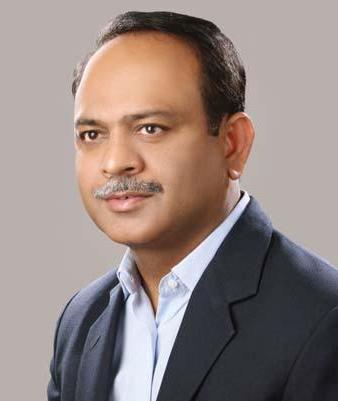
4 minute read
TelemaƟ cs is a paradigm shiŌ for insurers and consumers alike
Telematics is a paradigm shift for insurers and consumers alike
QCan you share your views on
Advertisement
Hughes off erings and services in automoƟ ve telemaƟ cs space?
AHUGHES SysƟ que CorporaƟ on (HSC), part of the HUGHES group of companies is a leading provider of Outsourced Product Development and Engineering R&D services in the CommunicaƟ ons, AutomoƟ ve, MulƟ media and IoT domains. HSC has been off ering product development services to AutomoƟ ve OEM and Tier1/ Tier2 suppliers for quite some Ɵ me now. We have vast experience in mulƟ ple AutomoƟ ve grade product development which includes In-Vehicle Infotainment System, Connected Cloud soluƟ on & ADAS system. We have developed advanced Connected Car Cloud -soluƟ on accelerator for our customer in the form of a ready to use cloud system. Machine Learning modelling & inferencing with telemaƟ cs data can be very easily performed on the Connected Cloud plaƞ orm. HSC has been a part of NVIDIA Autonomous Driving soŌ ware development program and have deep experience in Autonomous Vehicle soŌ ware development. Q SoŌ ware seems to be increasingly
dominaƟ ng the automoƟ ve telemaƟ cs space, comment.
AYes that is true to a large extent. A vehicle and its hardware provides the base plaƞ orm. But feature innovaƟ ons are possible majorly through soŌ ware. Upgradability is one of the key factors to consider for soŌ ware. Earlier there was very limited scope of soŌ ware upgrade on vehicles but now as connecƟ vity has become an integral part of a vehicle’s features, OTA’s are possible that allows new features to be rolled out over the lifeƟ me of the vehicle.
QAutomoƟ ve will be vulnerable to
cyber aƩ acks and intrusion in cloud services, how could the threat/loss be negated/minimized?
AAs connecƟ vity becomes integral part of vehicle, it will inevitably become vulnerable to cyber-aƩ acks. There are mulƟ ple ways to handle this issue. Plaƞ orm VirtualizaƟ on is one of the key approaches where criƟ cal soŌ ware related to vehicle control runs on a parƟ Ɵ on and user related applicaƟ on run on a diff erent parƟ Ɵ on. There are other soluƟ ons being developed which use advance machine learning techniques for threat detecƟ on and prevenƟ on. Q Where are we (India) in terms of
development and adopƟ on in the fi eld of connected cars?
AIndia is a unique market that is highly compeƟ Ɵ ve and very price sensiƟ ve. The concept of connected cars in an Indian context is sƟ ll at a nascent stage. We need to make a good value proposiƟ on for end customer to enable adopƟ on. Data driven services are going to play a major role in it. Intelligent analyƟ cs is to be done on various forms of data collected from the vehicle and new services need to be off ered to end customer. UBI is a good example of next generaƟ on data driven services. Q With so many autonomous vehicle
open source soŌ ware being released, what next is in store?
AAutonomous vehicle open source soŌ ware works as the basic plaƞ orm to the next set of feature innovaƟ ons. These innovaƟ ons will be craŌ ed on the premise of providing safety and comfort to passengers in a cost-eff ecƟ ve manner. Q How do you visualize the connected
car market in near future?
AData analyƟ cs and knowledge generaƟ on will be the key to the connected car market. As the vehicle starts having built-in connecƟ vity, there will be a huge amount of data that will be generated. AutomoƟ ve Industry would require good infrastructure for processing, storage, encrypƟ on and enrichment of data generated by vehicle operaƟ ons. The data needs to be categorized under several heads and intelligence built to use this data to provide acƟ onable inputs. This is where the connected car industry market will start gaining tracƟ on and lead to wider adopƟ on.
Vinod Sood
He is a veteran of hi-tech soŌ ware industry, during his career span of 30 years he has built high performance teams at premier R&D organizaƟ ons in India. Vinod has an excepƟ onal track record of building profi table and sustainable insƟ tuƟ ons from conceptualizaƟ on to maturity. He is member of NASSCOM Engineering R&D and Northern Regional Councils. He is a member of Advisory CommiƩ ee of the InsƟ tute of InformaƟ cs and CommunicaƟ ons, University of Delhi. Vinod is involved in guiding and mentoring young entrepreneurs and startups and is on the Advisory Boards of some of these startups most notably OYO rooms. He is a TiE Charter member and is part of several CII, NASSCOM and TiE juries to idenƟ fy emerging startups and innovaƟ ve product companies. Vinod is alumnus of PEC Chandigarh from where he graduated with a Gold Medal.
QWhere do you see mobility in next
couple of decades?
AShared mobility is a trend that is geƫ ng increasingly popular and mobility as a service is also in the offi ng. More data driven and personalized services will be off ered to the customer by the automobile companies. The automobile profi ts will likely migrate towards service providers. So, car manufacturers may not only stop at just selling the cars, but they will also evolve as mobility services provider in the years to come.









